ASRock B580 Steel Legend
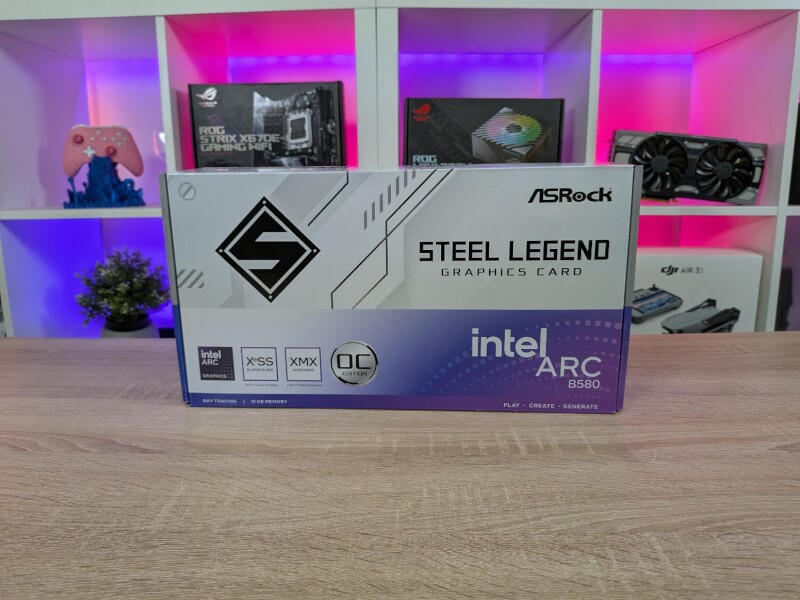
Key Features
- Intel® Arc™ B580 Graphics
- 12GB 192-bit GDDR6
- Intel® Xe2-HPG Architecture
- Intel® Xe Super Sampling 2 (Intel® XeSS 2)
- Intel® Xe Matrix eXtentions (Intel® XMX)
- Clock: GPU / Memory
- GPU Clock: 2800 MHz
- Memory Clock: 19Gbps
A little about Intel Arc
The new B580 boards are part of Intel's second generation of dedicated Arc graphics cards. This generation is codenamed Battlemage, hence the B part of the B580 name.
The cards are built on Intel's latest Xe2 architecture. On the surface, it may seem like a step back from the previous generation. The new XE2 chips in a B580 board come with 20 Xe Cores, each containing eight of Intel's Vector Engines, for a total of 160 Vector Engines, each with 16 shaders.
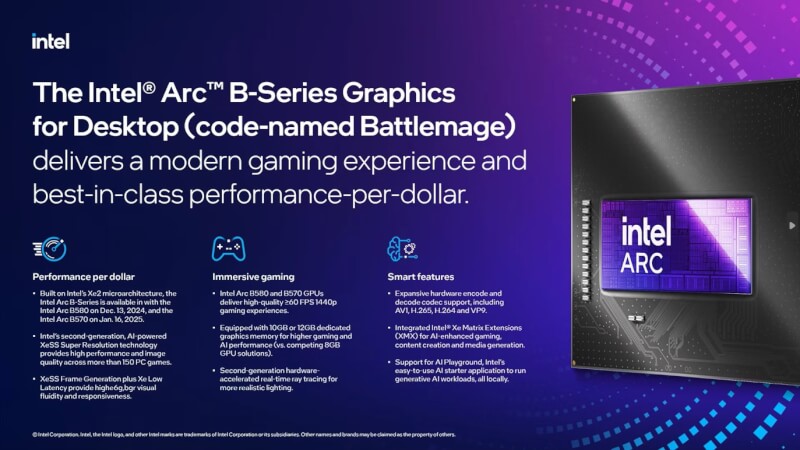
This gives a total of 2560 shaders on a B580 board, which is a bit less than the Arc A770 boards from the last generation. However, Intel has managed to improve the performance of each of the new cores quite a bit, in fact by up to 70%. So even though on paper there are fewer Shaders to do good with, the performance improvement should still be solid compared to the last generation.
The B580 boards come with 12GB of GDDR6 RAM on a 192-bit memory bus. A good portion for a board in this price range.
A tour around the Intel Arc B580 Steel Legend 12GB OC
The Partner card here from ASRock comes in a white design with a few silver elements that, as the name suggests, are of course made to match ASRock's Steel Legend series of motherboards.
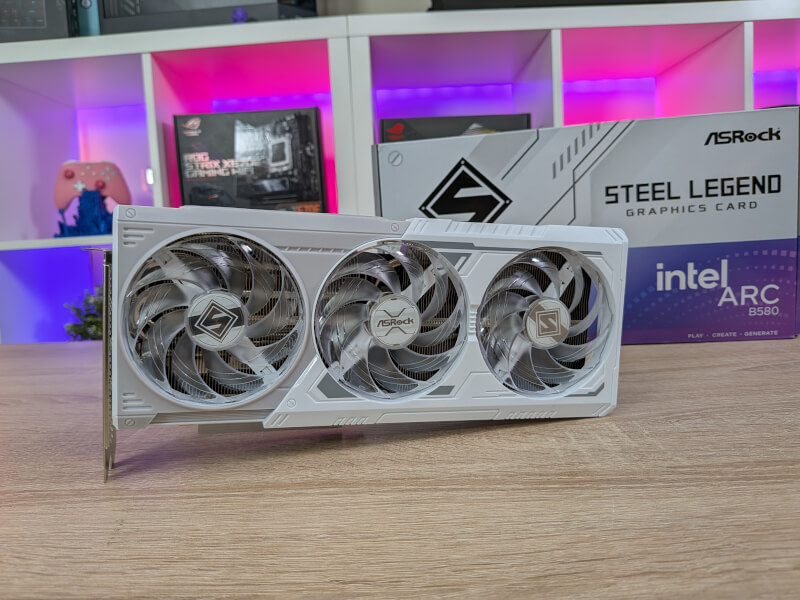
It is a 2.6 slot design with a total length of just under 30 cm, so all things being equal, a relatively compact card.
The materials are a combination of plastic and metal. The shield around the three fans is plastic, while the card has a metal backplate. The three fans are made of transparent plastic and have RGB lighting located in the central hub, which spreads nicely over the fins.
There is another RGB zone in the Steel Legend logo on the side of the card. For even more RGB fun, the card also has a three-pin RGB headset on the back, so you can connect another ARGB device here that will sync with the card.
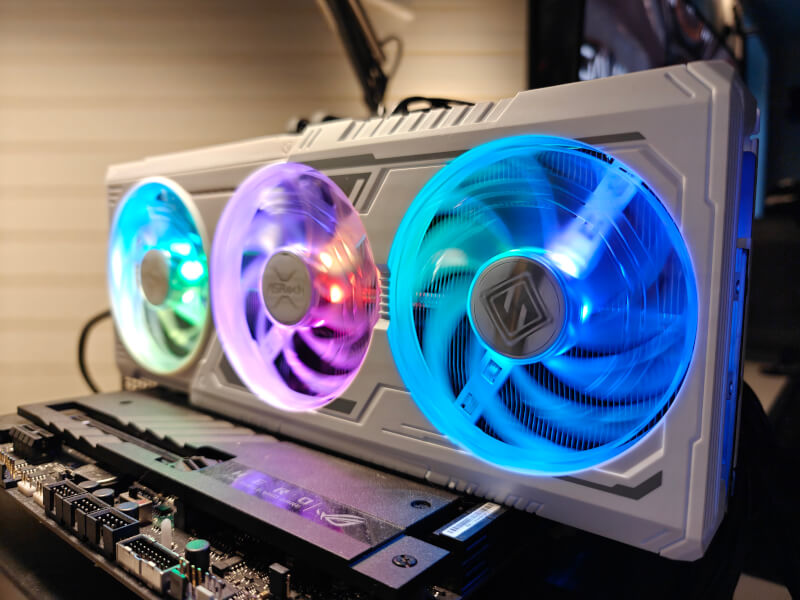
Finally, there is also an RGB on/off button if you prefer to avoid the light. Otherwise, it can also be customized via ASRock's Polychrome Sync software.
In terms of cooling, the card has, as mentioned, three fans sitting above a reasonable stack of cooling fins with four heatpipes. The cooler consists of a nickel-plated copper heatsink, where both the heatpipes and baseplate have direct contact with the GPU chip and the VRM parts on the card.
The last part of the cooler is open via the card's backplate, allowing free airflow.
The cooler has the option of 0dB mode, where the fans stop completely under low load to keep noise to a minimum.
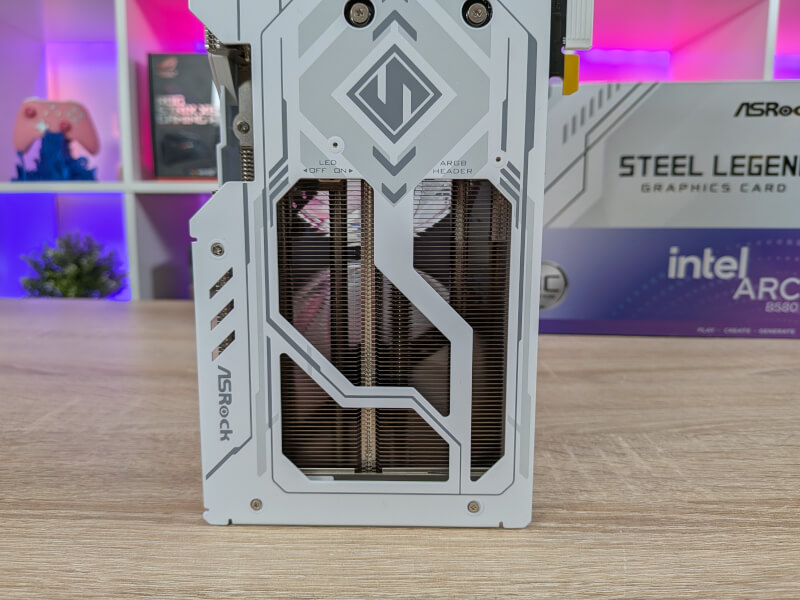
Power for the card is provided by two eight-pin PCIe connectors, which are located approximately in the middle of the card. ASRock recommends a 650W power supply for use with the card.
We finish by looking at the connections, where we get three DisplayPort 2.1 and a single HDMI 2.1a.
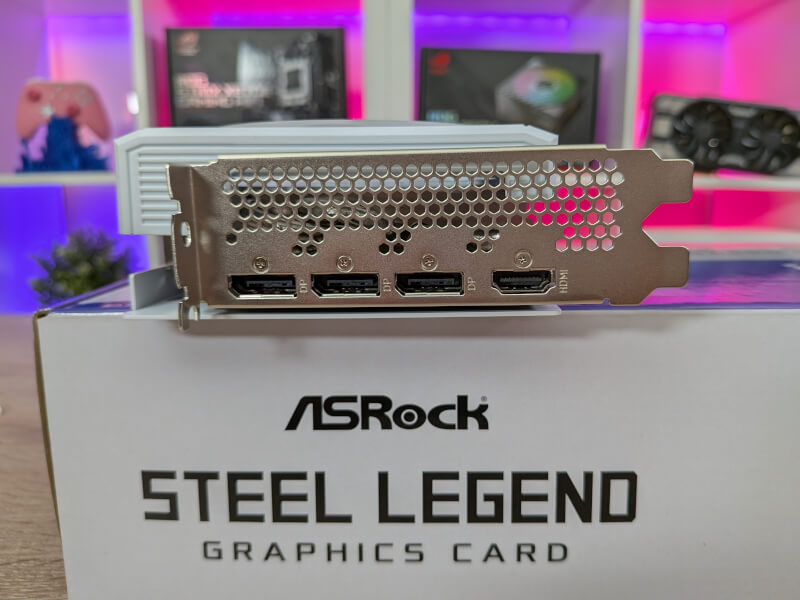
Overall, the construction of the card feels solid, although you can tell that ASRock has skimped on the plastic materials in order to keep the price down.
Test
We'll jump straight into the testing itself and see how the card performs in our selection of benchmarks.
All tests were conducted on our AMD based test bench with the following hardware:
- Motherboard: ASUS ROG Crosshair X670E Hero
- CPU: AMD Ryzen 9 7900
- RAM: 32 GB Kingston Fury DDR5 @6000 MHz
- PSU: Seasonic Vertex GX-1000
All cards included in the comparison have of course also been tested on the same setup.
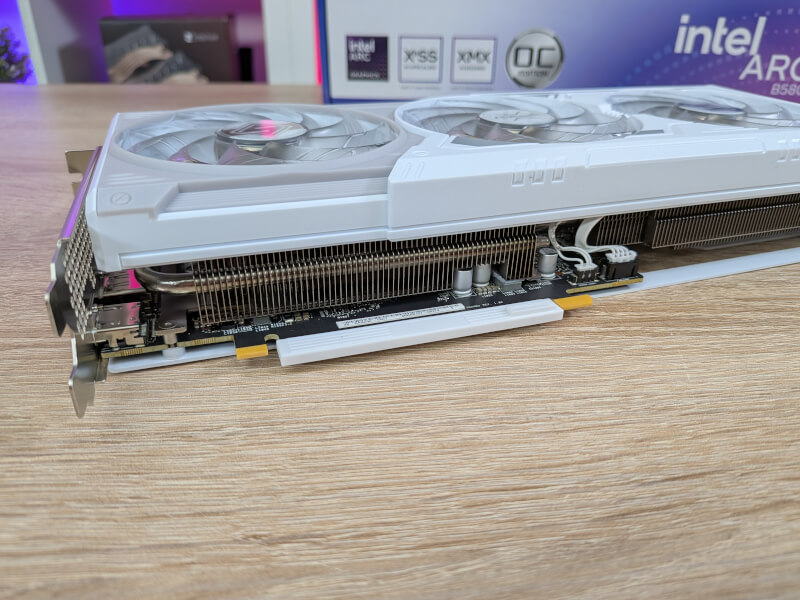
The first step is to get an overview of the baseline results, and I do this by letting the system run for 30 minutes with a Heaven stress test.
Here the card peaked with a boost clock of 2850 MHz, so slightly above the advertised speed from ASRock, and even better compared to the reference numbers which are 2670 MHz.
The temperature peaked at 58 degrees on the card's default fan profile.
Synthetic Benchmarks
The next step in the test is the synthetic benchmarks, where we start with 3D Mark Fire Strike Extreme.
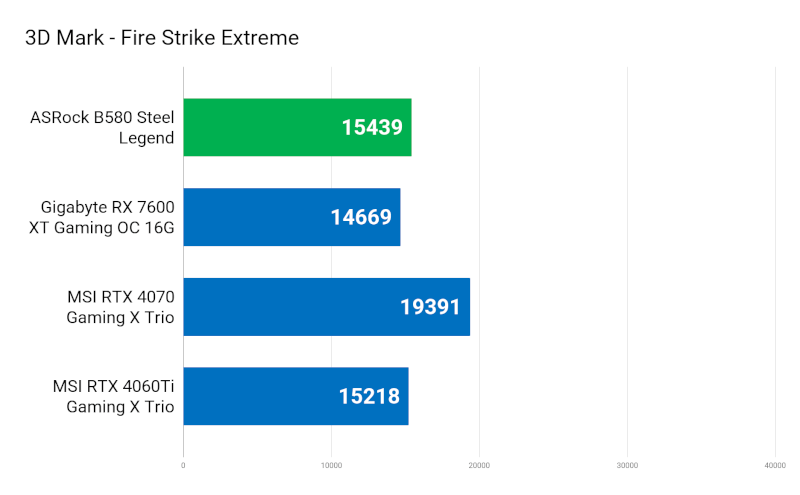
As we can see in the overview here, the ASRock B580 Steel Legend comes in really well and beats both the RX 7600 XT from AMD and the RTX 4060 Ti from Nvidia. Both of these cards can be considered the closest competitors if we look at the price. As I will get into later, the ASRock B580 Steel Legend beats both cards on price and therefore also on performance. So it's off to a good start for Intel and ASRock.
Time Spy
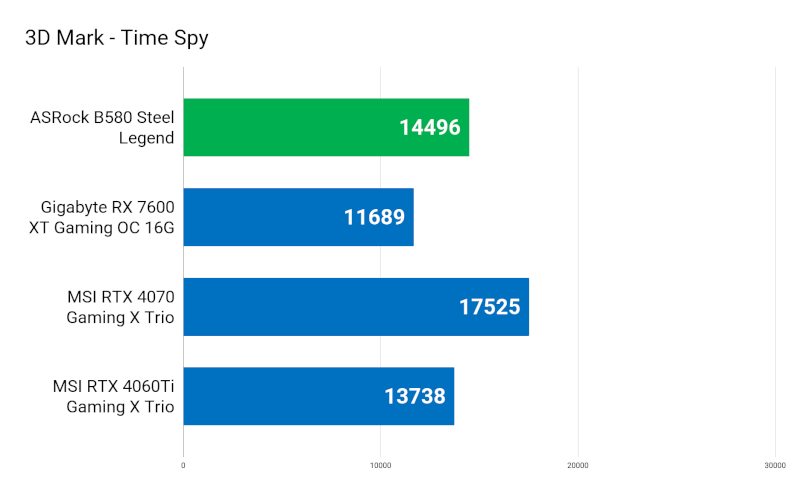
Here we can again see the same results for the card, which again beats both of its closest competitors quite solidly.
Game tests
Ultimately, synthetic benchmarks may not be as interesting as real-world gaming benchmarks, which is where we'll jump in. All tests here are conducted without the use of DLSS, render scaling, or other similar technologies, so it's a test of pure raw performance.
Cyberpunk 2077
- High Preset - NO DLSS - NO AMD Fidelity FX - Dynamic Resolution Scaling = OFF
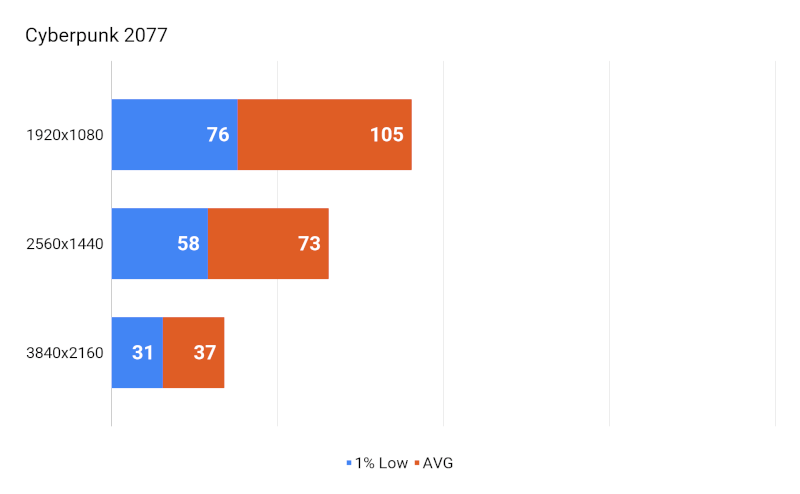
Here we can see that we are really good at both 1080p and 1440p resolutions with solid average FPS. With 105 and 73 FPS on average and reasonable 1% results, these are super playable results. Intel's marketing is clearly aimed at 1080p and 1440p gaming and here they are hitting the mark nicely.
However, 4K is more than the card can handle in a reasonable way without the help of upscaling. Here we can see that 12GB of RAM is not enough to bring good results.
.png)
Looking at the comparison, we can see that the results end up leaning a bit more towards the competition. However, there is a tendency for the ASRock B580 Steel Legend to perform better in the comparison at the higher 1440p resolution.
Assassin's Creed Valhalla
- High Preset - Resolution Scale: 100% - Adaptive Quality = OFF
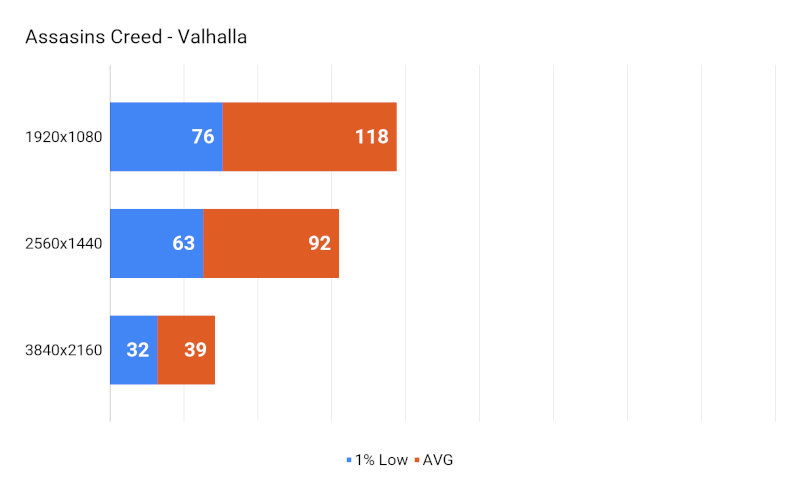
Here too we get really solid results. The results are quite similar to those we saw with Cyberpunk 2077 and are definitely playable at both 1080p and 1440p. However, 4K again proves to be a bit too much of a mouthful.
.png)
In the comparison we can see that the ASRock B580 Steel Legend performs better again. However, the trend with 1440p is also evident here where the B580 beats both the RX 7600 XT and the RTX 4060 Ti.
Outriders
The first generation of Intel Arc graphics cards had a number of challenges with drivers and game support. Much of this has been resolved for the new generation, but during my testing of Outriders it turns out that Intel has not quite reached its goal. In fact, I myself was unable to get the game to run satisfactorily.
So either there is a problem with Intel's driver, with the game's optimization for Intel Arc cards, or a combination of the two. That's the downside of a niche card like INtel Arc, all things being equal.
Overwatch 2
- Ultra Preset - Ultra Preset - Render Scale: 100% - Dynamic Render Scale: OFF - High Quality Upsampling: OFF
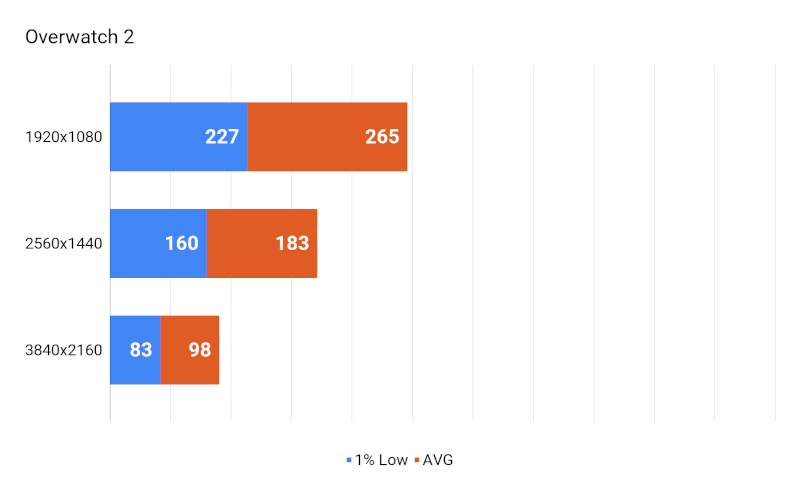
Fortunately, there were no challenges with the last game in the series, which is Overwatch 2. It is the easiest game in the series and this can also be seen in the results, where 4K can also be included. However, it is still 1080p and 1440p that you should aim for.

Looking at the comparison, we can see that the ASRock B580 Steel Legend is again super short compared to the more expensive cards.
Ray Tracing
Lately we have included Ray Tracing in our benchmarks and I have also run a few benchmarks here as Intel Arc supports Ray Tracing and even advertises it on the box. However, it is a heavy undertaking to throw yourself into, which can also be seen in the results.
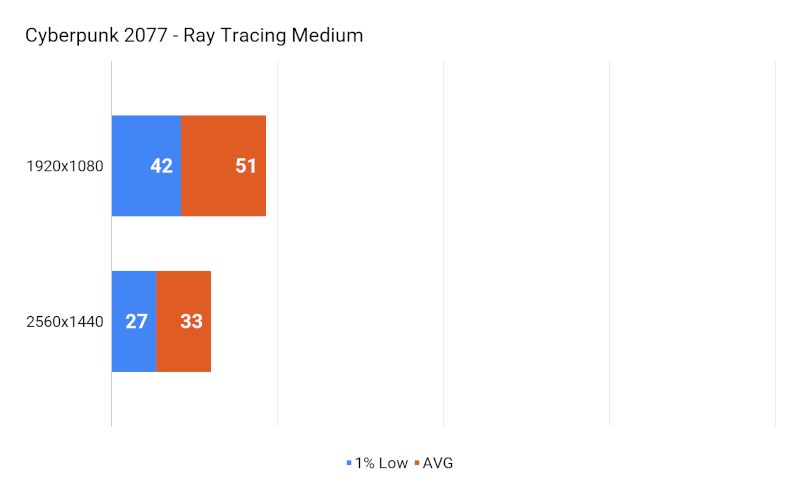
Even at 1080p in Cyberpunk 2077 with the Medium Ray Tracking preset, I landed on average results of 51 FPS. So right on the edge of what I would call the playable range for a game of this type.
However, you can use upscaling like Intel's own XeSS and here you can get playable results.
Price
At the time of writing, I can find the ASRock B580 Steel Legend with an online price of just under 350$. This means that it is very well positioned in comparison to its closest competitors such as an RTX 4060 or RX 7600 XT.
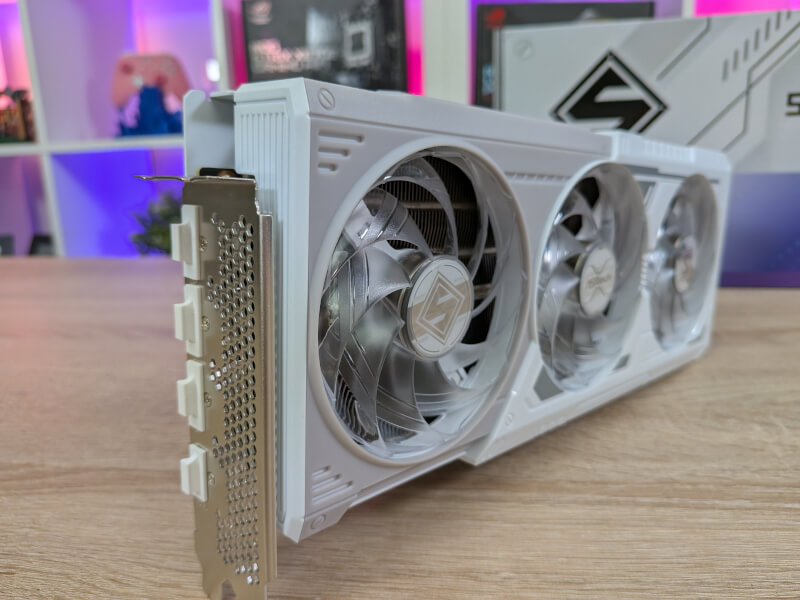
Conclusion
Intel has made a lot of progress with their Arc graphics cards. This is both in terms of the hardware itself, but their driver development has also made a lot of progress.
This means that the B580 series is a much more mature series of graphics cards. At the same time, the cards also come with a performance, and not least a price point, that in my book makes them very interesting.
On a pure price to performance basis, I think the ASRock B580 Steel Legend card in today's test easily beats both the RX 7600 RX and RTX 4060Ti cards when looking at 1080p and perhaps even more so 1440p gaming.
The downside is that there can still be small pockets of problems. I saw this in my test with the Outriders game, which was completely unplayable no matter what I did.
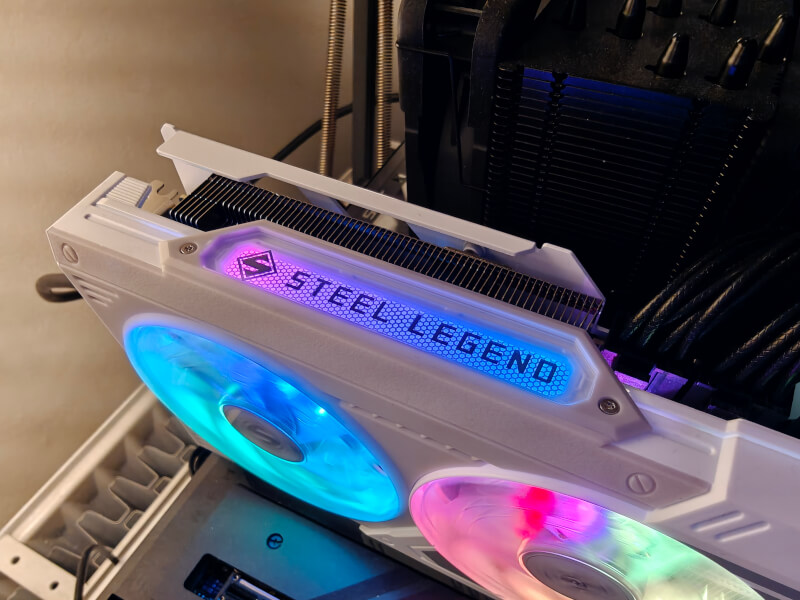
At the same time, it is also worth mentioning that the Intel Arc B580 card cannot be recommended as an upgrade for older systems. To achieve the performance we have seen here in the test, you need a motherboard that supports Resizable BAR. If you do not have it, you will experience a fairly large drop in performance with Intel Arc graphics cards.
If you can ignore that kind of thing, which can also happen on AMD and Nvidia cards, then I think it's worth looking for a card like the ASRock B580 Steel Legend if you need a new graphics card for gaming in 1080p or 1440p.
We end up with a final grade of 8, for a super solid graphics card that comes in with a really good price-performance ratio compared to its closest competitors.
Advantages:
- Sharp price
- Good performance at 1080p and 1440p
- Virtually silent even at full load
Disadvantages
- The Intel Arc platform may still have issues with certain games
- Requires motherboard that supports Resizable BAR

Latest graphics card
-
20 Margraphics card
-
13 Jangraphics card
ASRock B580 Steel Legend
-
07 Jangraphics card
ASUS showcases new AMD RX 9700 graphics cards
-
07 Jangraphics card
ASUS ready with large selection of RTX 50 graphics
-
07 Jangraphics card
Nvidia Reflex 2 reduces gaming latency
-
07 Jangraphics card
Nvidia launches DLSS 4 with the new RTX 50 series
-
07 Jangraphics card
Nvidia RTX 50 series is ready
-
07 Jangraphics card
Nvidia launches RTX 5090 at CES
Most read graphics card
Latest graphics card
-
20 Margraphics card
ASRock RX 9070 Steel Legend
-
13 Jangraphics card
ASRock B580 Steel Legend
-
07 Jangraphics card
ASUS showcases new AMD RX 9700 graphics cards
-
07 Jangraphics card
ASUS ready with large selection of RTX 50 graphics
-
07 Jangraphics card
Nvidia Reflex 2 reduces gaming latency
-
07 Jangraphics card
Nvidia launches DLSS 4 with the new RTX 50 series
-
07 Jangraphics card
Nvidia RTX 50 series is ready
-
07 Jangraphics card
Nvidia launches RTX 5090 at CES






